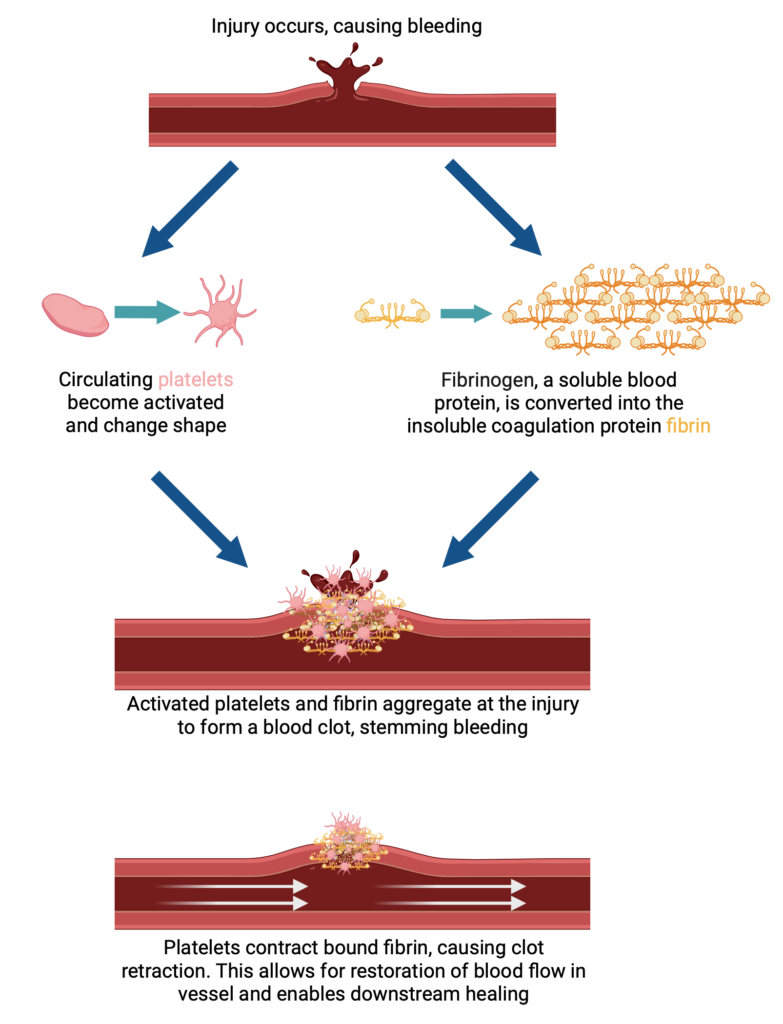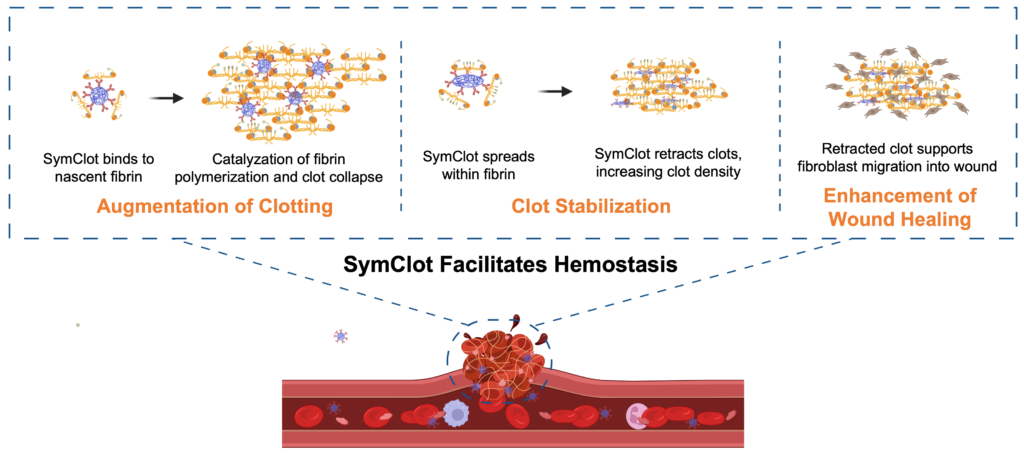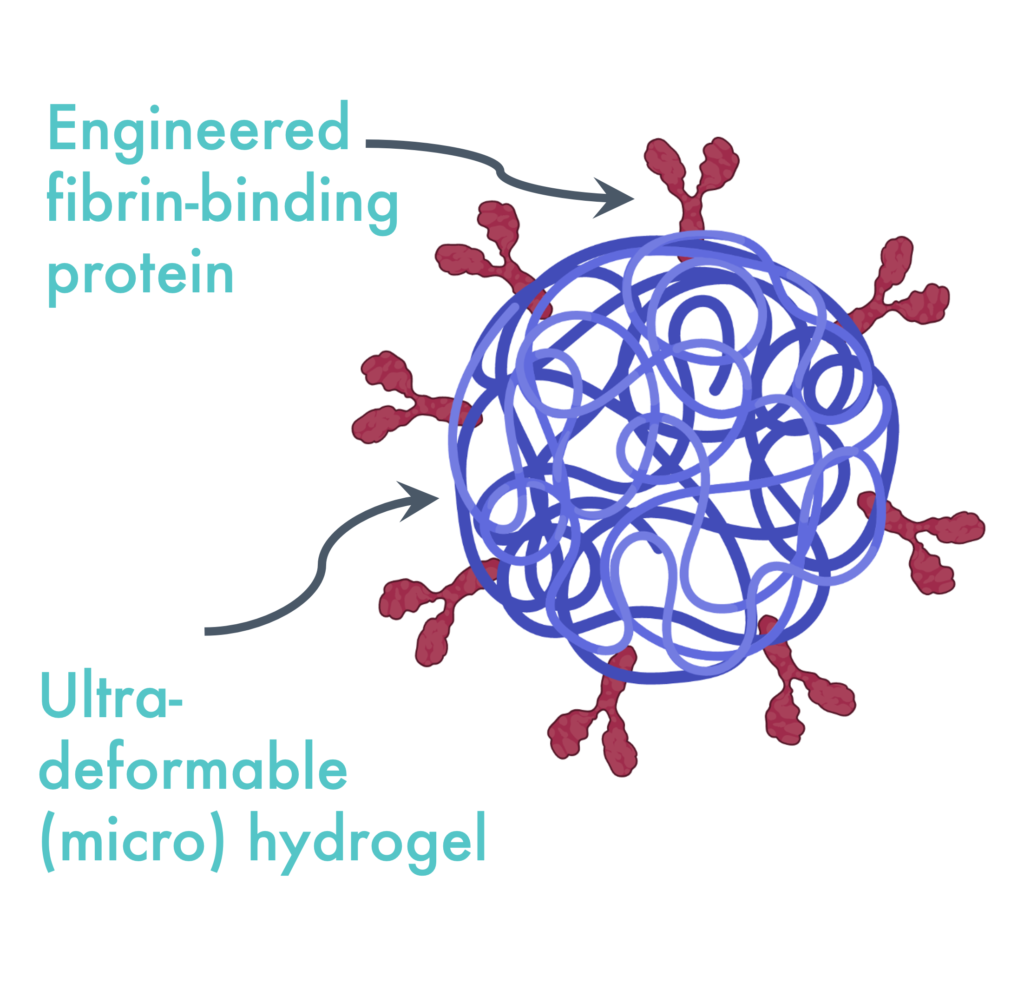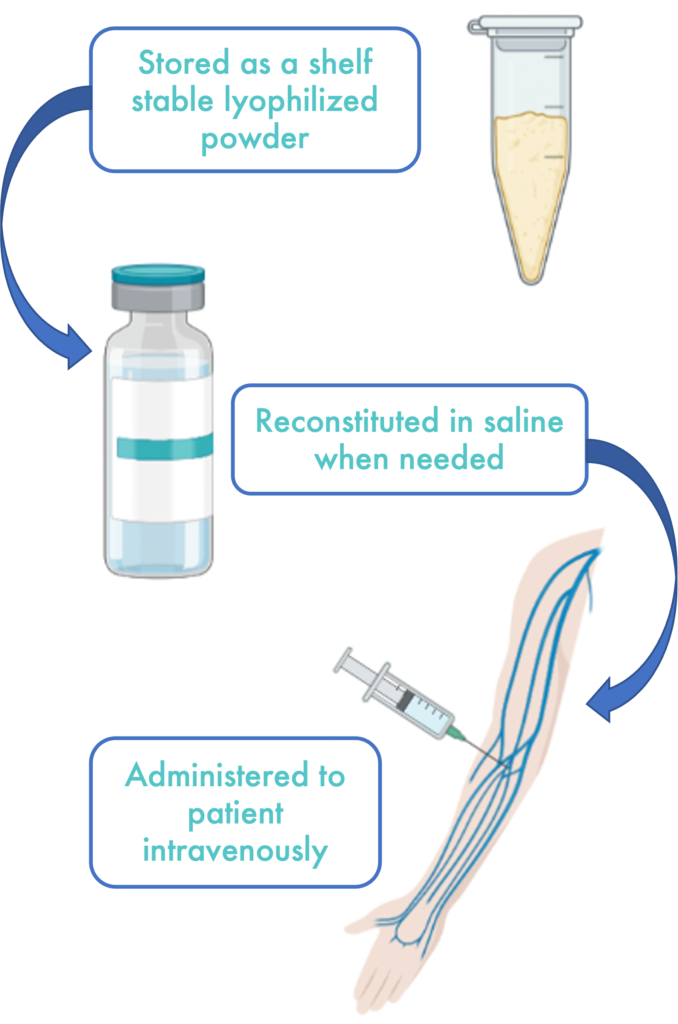
PLATELETS AND BLOOD CLOTTING
During normal hemostasis, platelets play several key roles in the wound healing process. Upon sensing an injury, platelets become activated, changing shape to a “sticky” stellate conformation and aggregating at bleeding sites. These “sticky” activated platelets bind to each other and to the coagulation protein fibrin, which is created via polymerization of the blood protein fibrinogen and is found exclusively at bleeding sites. The resultant platelet-fibrin mesh stems blood loss. Platelets additionally exert contractile forces on the bound fibrin, pulling the fibers closer together and causing overall retraction of the clot over time. This retraction allows blood to flow to reperfuse the healing tissues and enables subsequent stages of wound healing.
SYMCLOT: PLATELET MIMETIC TECHNOLOGY FOR CLOTTING AND HEALING SUPPORT

SymClot is a synthetic platelet that mimics key functions of native platelets in hemostasis and wound healing:
- Highly specific wound site targeting
- Mechanical induction of clot retraction.
SymClot homes to sites of bleeding with minimal risk of off-target binding via highly fibrin-specific antibody fragments on its surface. SymClot’s hydrogel body confers high deformability, which allows SymClot to spread within fibrin networks and exert strain upon multiple bound fibers to induce clot retraction. This ability to influence clot retraction allows SymClot to not only reduce blood loss, but to also improve downstream wound healing outcomes.


WHY SYMCLOT?
Due to its synthetic and highly targeted design, SymClot possesses a number of advantages over current hemostatic technologies:
Safety and Functionality
SymClot’s fibrin-specific targeting mechanism confers high wound specificity and low risk of thrombosis when injected intravenously, allowing for both reactive and proactive treatment of bleeding regardless of bleed location. Additionally, the soft hydrogel body possesses minimal immunologic risk and allows for recapitulation of key mechanical features of native platelets.
Fast and Reliable Supply
SymClot can be quickly manufactured at large scale and eliminates dependency on donors for supply. SymClot can therefore help alleviate critical platelet shortages and provide a more reliable supply of hemostatic therapeutics to small clinics and hospitals in austere environments.
Easier Storage, Less Waste
SymClot can be freeze dried and reconstituted as needed, allowing for transportation and safely storage at room temperature for months at a time. This will help reduce product waste and bacterial testing time associated with the use of donated platelets, which are prone to contamination and have a maximum shelf life of 7 days.
Learn More About SymClot:
Nandi, S., Mihalko, E., Nellenbach, K., Castaneda, M., Schneible, J., Harp, M., Deal, H., Daniele, M., Menegatti, S., Barker, T.H. and Brown, A.C., Synthetic Platelet Microgels Containing Fibrin Knob B Mimetic Motifs Enhance Clotting Responses. Advanced Therapeutics, 4: 2100010 (2021)